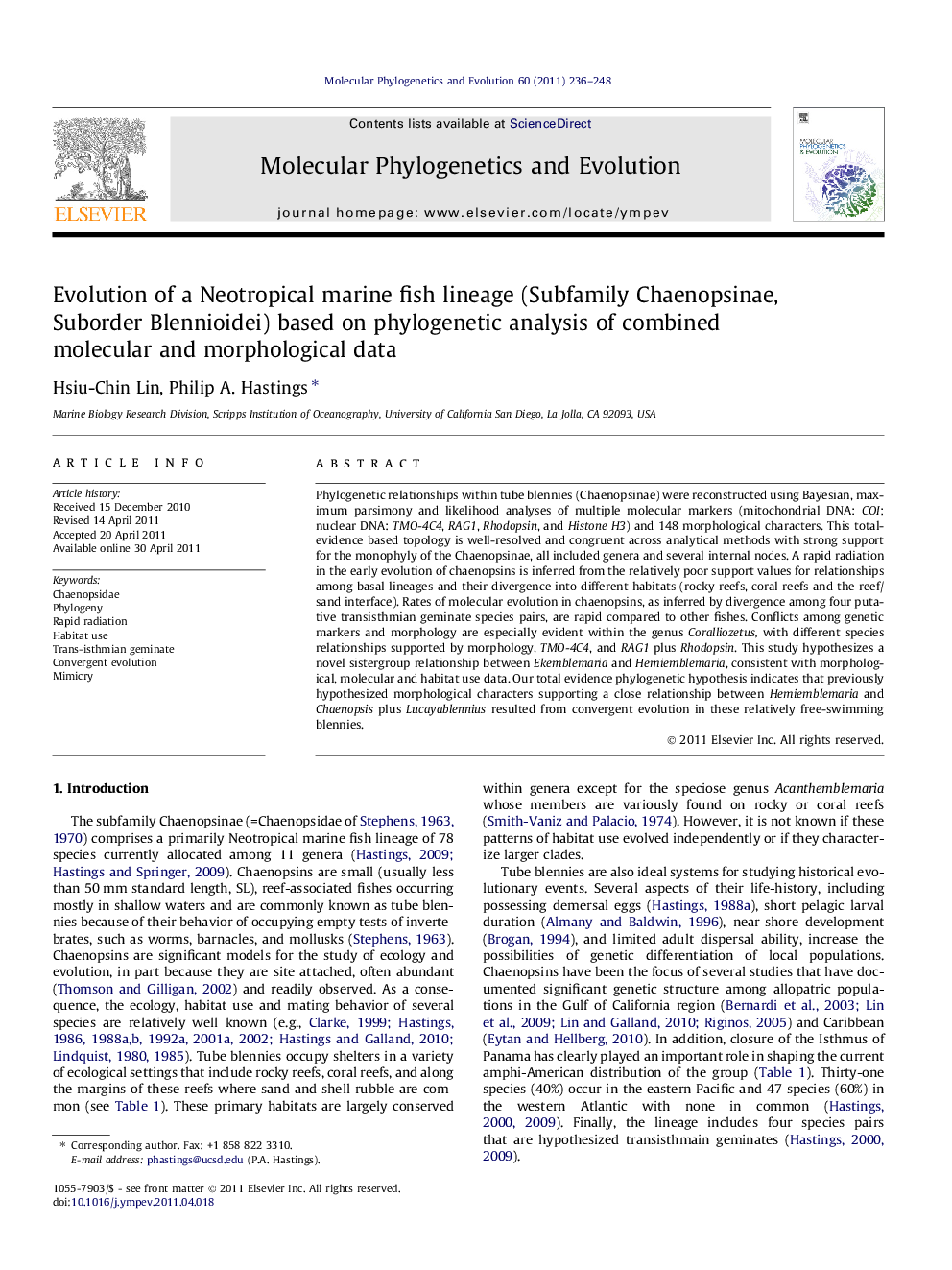| Article ID | Journal | Published Year | Pages | File Type |
|---|---|---|---|---|
| 2834236 | Molecular Phylogenetics and Evolution | 2011 | 13 Pages |
Phylogenetic relationships within tube blennies (Chaenopsinae) were reconstructed using Bayesian, maximum parsimony and likelihood analyses of multiple molecular markers (mitochondrial DNA: COI; nuclear DNA: TMO-4C4, RAG1, Rhodopsin, and Histone H3) and 148 morphological characters. This total-evidence based topology is well-resolved and congruent across analytical methods with strong support for the monophyly of the Chaenopsinae, all included genera and several internal nodes. A rapid radiation in the early evolution of chaenopsins is inferred from the relatively poor support values for relationships among basal lineages and their divergence into different habitats (rocky reefs, coral reefs and the reef/sand interface). Rates of molecular evolution in chaenopsins, as inferred by divergence among four putative transisthmian geminate species pairs, are rapid compared to other fishes. Conflicts among genetic markers and morphology are especially evident within the genus Coralliozetus, with different species relationships supported by morphology, TMO-4C4, and RAG1 plus Rhodopsin. This study hypothesizes a novel sistergroup relationship between Ekemblemaria and Hemiemblemaria, consistent with morphological, molecular and habitat use data. Our total evidence phylogenetic hypothesis indicates that previously hypothesized morphological characters supporting a close relationship between Hemiemblemaria and Chaenopsis plus Lucayablennius resulted from convergent evolution in these relatively free-swimming blennies.
Graphical abstractFigure optionsDownload full-size imageDownload as PowerPoint slideHighlights► Phylogenetic relationships of tube blennies were determined based on a total evidence analysis of nuclear and mitochondrial markers and morphological characters. ► Monophyly of the Chaenopsinae and all currently recognized genera was supported. ► Rapid radiation among the basal lineages was inferred and congruent with habitat divergence.
